Urinary Problems
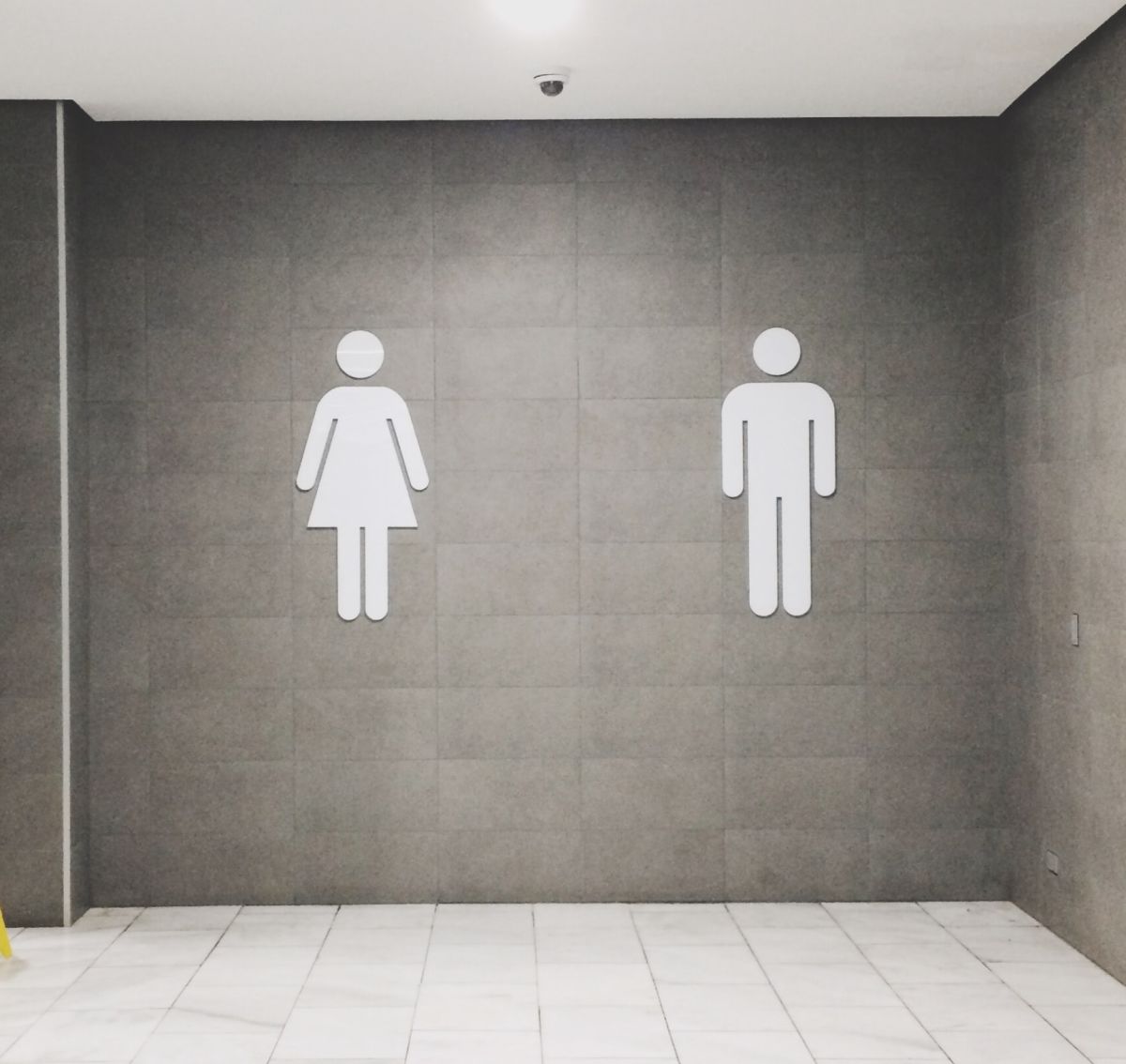
Despite urinary symptoms being incredibly common during pregnancy, most women do not bring their concerns to the attention of their health care provider (HCP). However, if HCPs are aware of problems early, they can offer management techniques to prevent further progression of these symptoms, to include as a result of delivery.
Urinary symptoms during pregnancy include urgency, frequency, leaking, burning, stinging, pressure, difficulty emptying the bladder, as well as general pain and discomfort.
Although most symptoms go away in the postpartum period, there are several steps an HCP can take to evaluate a woman’s symptoms, look for a cause, prevent further severity of these symptoms, and screen for potential complications, such as infection.
Potential causes include pregnancy-related changes such as increased fluid volume and blood flow to pelvic organs, uterine weight and pressure on pelvic organs, as well as a retroverted uterus, a sexually transmitted infection, and/or a urinary tract infection (UTI). UTIs are very common during pregnancy, and women may experience their first one during this time, and screening requires only a urine test.
Women who experience urinary symptoms during pregnancy are far more likely to experience symptoms after delivery, and discussing these concerns early with an HCP can help prevent additional symptom severity and improve a woman’s quality of life in the postpartum period.
Background
During pregnancy, many women suffer from lower urinary tract symptoms which they very rarely report to their HCP despite the extreme impact these symptoms can have on their lives.
If women experience these symptoms during pregnancy (vs. postpartum), the HCP can be aware and attempt to minimize any additional damage that may occur during delivery (see causes).
Further, severe symptoms very early in pregnancy could be due to a retroverted “tipped” uterus that will eventually correct itself. However, these issues should be evaluated as early as possible by an HCP to prevent further progression.
It is estimated that more than half of pregnant women will experience at least one urinary symptom during pregnancy, which can include discomfort, incontinence (leaking), trouble voiding (emptying, also known as retention), frequency (most common), and pain related to inflammation, swelling, or infection (UTI).
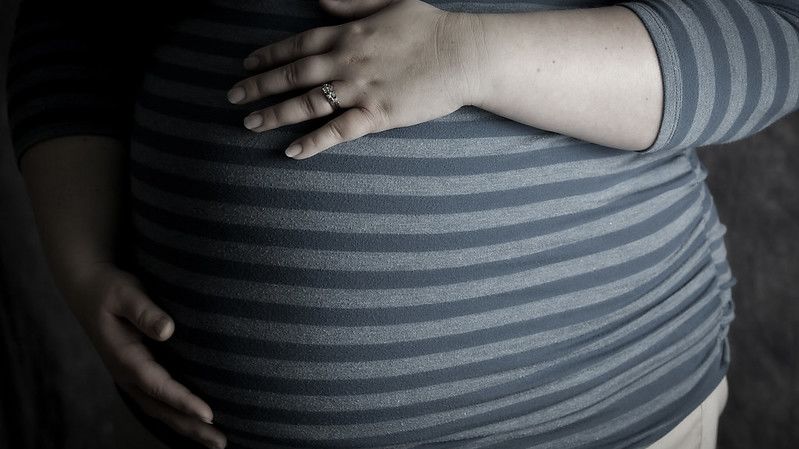
Causes
There are two main causes of urinary symptoms during/after pregnancy:
Pregnancy itself
Vaginal delivery
However, further detail regarding how pregnancy and vaginal delivery cause these problems specifically is not completely known but is likely due to stress on the pelvic floor nerves, ligaments, muscles, and tissues, perineal damage, and potential injury to the bladder.
During vaginal delivery, the pelvic nerves, muscles, and ligaments that control bladder function and position may be injured during a long or difficult labor, especially if assisted delivery (forceps/vacuum) is also used.
It is important to note, especially as women are increasingly requesting cesarean section (c-section) without a medical reason, that c-sections are not completely protective of urinary symptoms in the postpartum period. Pregnancy itself can cause postpartum urinary problems, no matter the mode of delivery, and women should not choose a c-section specifically to avoid these concerns.
Further, at least one study showed bladder neck mobility (which can cause incontinence) was increased in postpartum women no matter the delivery method. Additionally, c-section carries its own separate surgical risks, to include possible bladder injury.
C-section does, however, eliminate the risk of further injury to these tissues that may exacerbate severe symptoms some women may already be experiencing. These women may be at increased risk of further bladder or pelvic floor damage and should discuss the risks and benefits of a c-section with their HCP for the prevention of severe postpartum urinary complications.
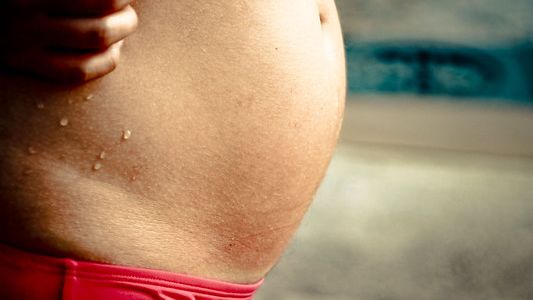
Currently, researchers do not believe this type of damage can be prevented prior to or during pregnancy, especially as any prevention method may become less effective as the same woman has additional pregnancies.
The only viable method of prevention is to avoid certain techniques during labor and delivery that increase risk, but the methods causing these issues during delivery have not been fully identified. It is currently recommended that HCPs attempt to minimize perineal damage during delivery and use assisted delivery only when deemed absolutely necessary or to avoid a c-section.
Retroverted “Tilted” Uterus
A retroverted uterus can cause urinary discomfort in the first trimester. About 15% of women have a “tipped” uterus in the first trimester that eventually tips forward by the 16th week to correct itself.
Prior to this occurring, the placement of the uterus can cause additional urinary discomfort mostly due to urethral pressure. This also causes voiding issues, pain, and frequency. An HCP that becomes aware of this early a woman’s pregnancy can continue to monitor both the uterus’ placement and the progression of the woman’s symptoms.
Pain
Pain in the lower urinary tract during pregnancy can be caused by inflammation (swelling) of the labia, a sexually transmitted infection, or a urinary tract infection. Late in pregnancy, pain can be caused by compression of the bladder by the baby’s head.
If women suspect they may have a sexually transmitted infection, they need to call their HCP immediately for evaluation and treatment to prevent potential severe complications during their pregnancy for both themselves and their babies.
Frequency
Pregnancy causes more blood flow to the pelvic area and kidneys almost immediately after implantation. Blood volume also increases, and the kidneys are required to eliminate waste quicker than before pregnancy, resulting in urinary frequency as early as 7 weeks of pregnancy (read Kidney changes).
Urinating once every hour or two is considered frequent. Once a woman notices urinary frequency during her pregnancy, it is nearly always increasingly worse until term.
However, frequency of normal urination may vary dramatically among pregnant women depending on bladder capacity and drinking habits.
Normal bladder capacity in the first trimester is 410 ml (average adult bladder holds 400 to 700 ml). Bladder capacity increases in the second trimester to 460 ml, but dramatically decreases in the third trimester to around 272 ml due to compression by the baby’s head.
This compression of the bladder causes women to feel the urge to urinate sooner than they normally would prior to pregnancy.
In general, adults will not urinate more than once after going to sleep. Pregnant women may urinate in the middle of the night more than 4 times beginning as early as the second trimester.
Uterine weight is the most important factor which affects frequency during pregnancy, which adds significant pressure and irritation to the bladder.

Certain medications, such as diuretics and some high blood pressure medications eliminate fluid in the body and can also compound urinary frequency if taken during pregnancy.
In the postpartum period, the kidneys continue to work hard to eliminate the extra fluid from the increased blood volume. These levels slowly return to normal about eight weeks postpartum, which mainly occurs through frequent urination.
Very rarely, urinary frequency during pregnancy can be a sign of gestational diabetes insipidus (GDI) (not gestational diabetes mellitus). However, its symptoms are much more noticeable and severe than described above, along with an intense desire to drink water. This condition can lead to severe dehydration.
It is assessed the condition is most likely underdiagnosed because urinary frequency is a very normal symptom of a healthy pregnancy. GDI usually has a very rapid onset defined by abnormally high volumes of diluted urine exceeding possibly three liters per day with absolute intense thirst.
If women suspect they are experiencing these symptoms, their HCP should be notified who will run various screening tests. GDI normally goes away a few weeks after delivery.
Incontinence (Leaking)
Urinary incontinence (leakage) is an important issue during pregnancy, as it causes a significant reduction in a woman’s quality of life and a temporary – but sometimes permanent – change in their daily habits to control symptoms.
Urinary incontinence affects nearly 20% of women during the first trimester and nearly 50% during the third trimester.
Urinary incontinence is frustrating to researchers, as it cannot yet be explained why some women develop this symptom while others do not.
However, at least one study published in June 2021 found that pelvic floor muscle strength, as well as thickness, is significantly lower among women who experience leaking, both during pregnancy and in the postpartum period.
It is currently assessed that because uterine weight puts pressure on the bladder (and weak pelvic muscles), women can experience leaking (stress incontinence) with sudden movements, laughing, sitting, changing positions, and even after “emptying” the bladder and walking toward a bathroom sink. Women may also notice leakage from bending over, walking up steps, or squatting.
Risk factors appear to be the type of delivery, the number of deliveries (especially vaginal), a larger baby, small pelvic bones, a prolonged labor, breech, and the use of assisted delivery.
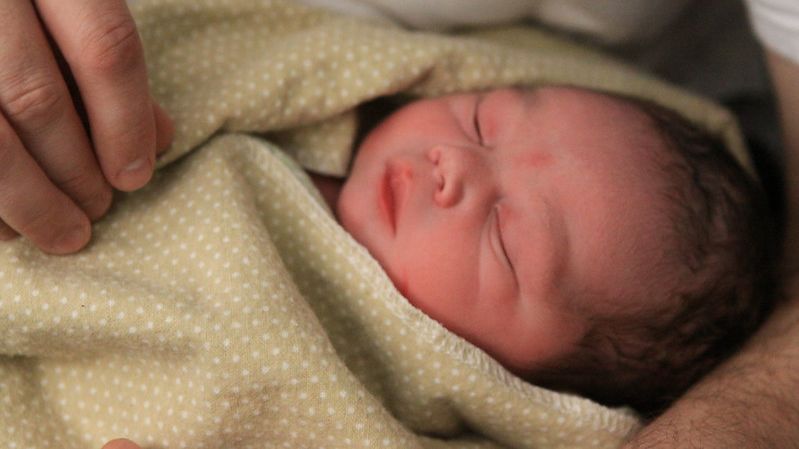
Women should inform their HCP if they are experiencing incontinence. If a woman wishes to have a vaginal delivery, her HCP may be able to minimize (assisted delivery) or maximize (oxytocin to avoid prolonged labor) interventions used to avoid further symptom severity in the postpartum period.
Further, strong evidence indicates that Kegel exercises, when done correctly, can lessen symptom severity (see Action section).
Voiding
Trouble emptying the bladder is also a common urinary symptom. Prevalence of this specific symptom is not very clear since women likely do not fully report it, but it is estimated that 25% of pregnant women may experience trouble voiding at least once.
Women can have trouble starting urination or completely emptying the bladder after urination has already begun (interrupted stream). If urine remains in the bladder too long, it can cause potential infection and stretching of the bladder, causing temporary or permanent damage to the muscles.
Symptoms of this condition can occur early in pregnancy and may peak between 9 and 16 weeks. This eliminates uterine weight as a main causal factor for the symptom.
A study published in February 2022 indicated that severe urinary retention during pregnancy is an uncommon form of pelvic floor dysfunction and occurs in approximately 1-in-1000 pregnancies. Women need to tell their HCP if they are experiencing voiding trouble, as possible causes include a retroverted uterus, fibroids, an incarcerated uterus, ectopic pregnancy, lower genital tract infection, pelvic inflammatory disease, and lumbar disk disease, most of which need immediate treatment.

Urgency
Urgency is an abrupt, strong, often overwhelming need to urinate that may or may not produce urine when a woman attempts to urinate. This symptom is more common in pregnant women who have a UTI.
A study published in March 2021 indicated that of the 383 pregnant women who completed their questionnaire, urgency was the most common symptom, and risk increased with a body mass index higher than 30.
Urinary Tract Infection
A UTI is an infection of the urinary tract (bladder, kidneys) due to the presence of bacteria in the urine. UTIs are among the most common medical complications during pregnancy, with an incidence as high as 8% of all pregnant women (this equals an estimated 320,000 women in the United States every year).
Additionally, hormonal and physical changes of pregnancy make women more susceptible to UTIs. Further, leaking issues during pregnancy and in the postpartum have been associated with an increased risk of UTI.
Bacteria live on the skin near the anus or in the vagina, which can spread and enter the urinary tract through the urethra, causing a UTI. If bacteria move farther up the urethra, this can cause a bladder infection (called cystitis). If untreated, the infection can continue to spread to the kidneys (pyelonephritis) and cause severe complications.
Symptoms include a strong urge to urinate, even when urine is not present. When urine does flow, it can cause sharp pain, itching, or burning, with an urge to urinate again returning shortly afterward. Soreness can also be felt in the lower abdomen, in the back, or in the sides.
If women experience any of these symptoms, they need to call their HCP. Screening for a UTI is a simple urine test; UTIs are treated with antibiotics. More information on UTIs and the potential complications of an untreated UTI during pregnancy can be read here.
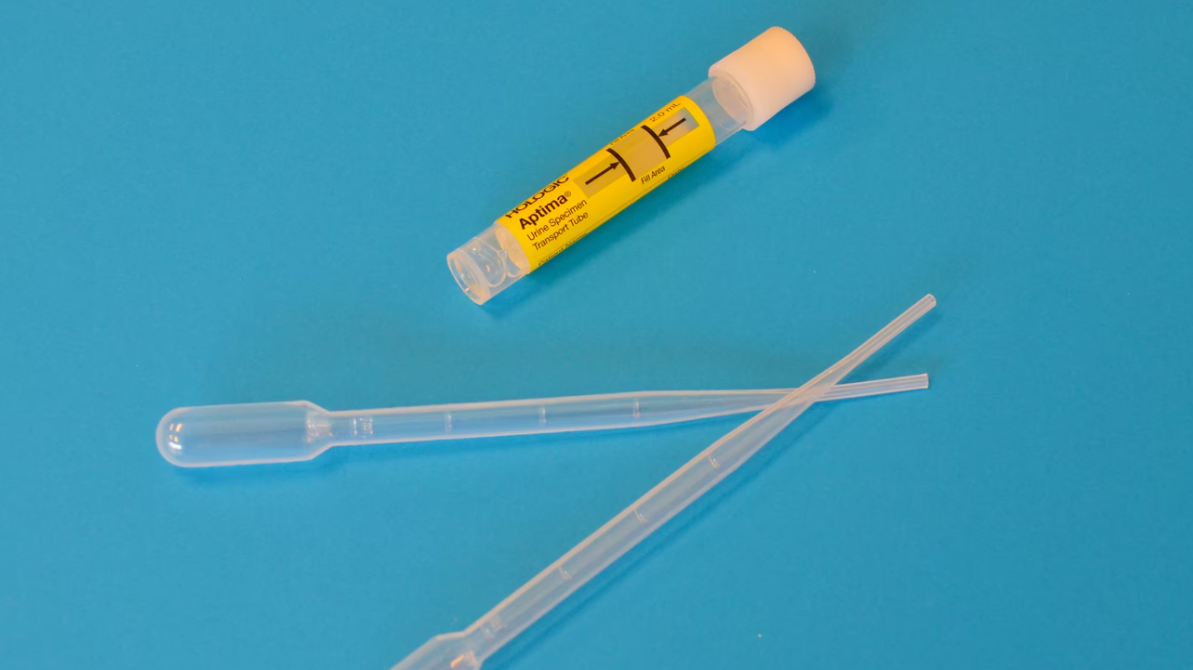
Postpartum
Immediate Postpartum: Temporary swelling after delivery can affect urination. Women can have trouble starting urination, trouble completely emptying, and/or may feel pain and discomfort. It is often recommended that women use peri bottles filled with warm water at the same time as they urinate which can help relieve pain.
First few weeks and months: In most cases, damage created by vaginal delivery repairs itself as tissues, nerves, and muscles heal; even severe symptoms can dramatically improve within the first six months. Possible symptoms include:
Frequency: In the first eight weeks, the kidneys work hard to eliminate the extra fluid from the increased blood volume during pregnancy through frequent urination. These levels slowly return to normal about two months postpartum.
Leaking: A study published in October 2021 found that at a population level, vaginal delivery was the major risk factor for stress incontinence in the postpartum period, followed by the presence of stress incontinence during pregnancy.
Retention: A study published in February 2022 determined that, reassuringly, long-term pelvic floor dysfunction is minimal in women who experience trouble emptying their bladder during pregnancy.
Even though vaginal and perineal tissues will heal, the bladder continues to lose muscle tone in the early postpartum period, and damaged muscles and ligaments may not always heal completely in some cases. Leaking can become a problem as the muscles further weaken through age or additional pregnancies. Fortunately, only about 5% of women still have incontinence issues 12 months after delivery.
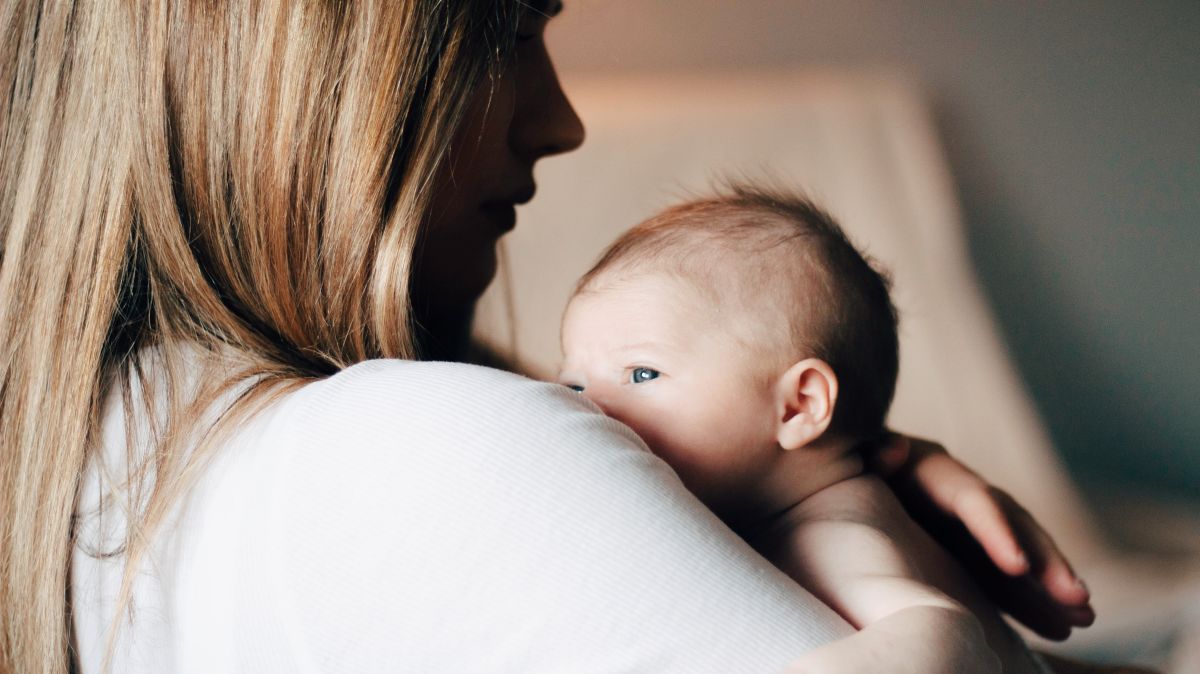
Action
Management of these symptoms begins with women talking to their HCP. Although these symptoms are common, not all are self-limiting, and they can be caused by factors that could cause complications during pregnancy.
If women are embarrassed or struggle trying to explain their symptoms, the content on this page can help. Women can share this page with their HCP who will then know to approach the subject at the next appointment.
It is important that women do not limit or avoid fluid intake as drinking is important and simply drinking less water will not help avoid leakage. It is important that women continue to drink when they are thirsty and get up at night when they need to use the bathroom. Less fluid intake can cause dehydration, a risk factor for UTIs.
Women experiencing incontinence may wish to wear pantyliners. They should be changed frequently to avoid infection; some liners can irritate the vagina, therefore women who need to use them for an extended period should find one that makes them most comfortable.
Pelvic Floor Muscle Exercises (PFME), also known as Kegel exercises, are the first line and most popular intervention to treat urinary leakage.
PFME are specific exercises for pelvic floor muscles and are different from exercises of other muscles in the body. Kegels require a strong commitment from women; this form of exercise requires dedication, endurance, and effort on the part of women in order to see results.
Postpartum women who have performed these exercises have reported cure rates as high as 84% and improvement rates as high as 100%.
PFME can reduce the incidence of incontinence even while still pregnant, and in late term, if started early enough during gestation.
There is one-size-fits-all method for these exercises, but five fundamental rules include:
(1) Identifying the appropriate muscles which stop or slow the flow of urination
(2) Contracting the muscles as in a correct manner (as if stopping the flow of urine)
(3) Repeating the cycle several times
(4) Alternating between fast and slow contractions
Further, women should avoid contracting only the gluteal, inner thigh, or abdominal muscles.
Women should also consider sharing and submitting their experience below regarding urinary problems during pregnancy. This can help other women learn additional perspectives regarding this concern, how to potentially manage symptoms, and how to talk to their HCP about these issues.
Resources
Urinary Tract Infections (American College of Obstetricians and Gynecologists; February 2019)
Urinary Incontinence (American College of Obstetricians and Gynecologists; August 2019)
Urinary Incontinence in Women: Practice Bulletin 155 (American College of Obstetricians and Gynecologists; November 2015)